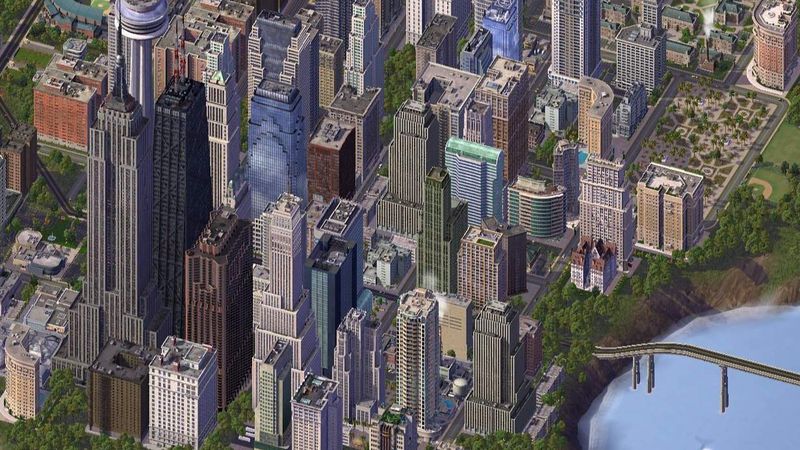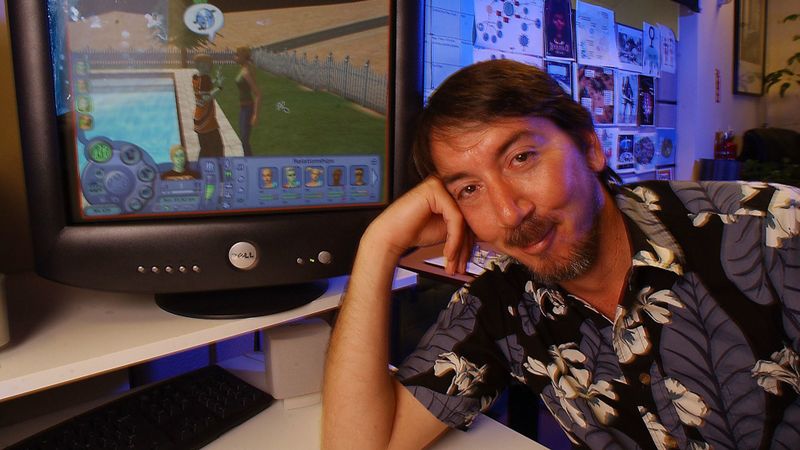How SimCity inspired a whole generation of city planners

Scene from SimCity 4 Deluxe.
SimCity fell into the hands of Jason Baker when he studied political science at the University of California, Davis. Jason carefully studied this computer game.
“I was not one of those players who liked how Godzilla runs through the streets and destroys buildings. I liked to set up organized city life. ”
')
Such a conscientious approach provided him with an advantage in the course of local self-government. Instead of writing a course paper on three models of possible urban development, Baker proposed to recreate these three scenarios in SimCity, and then let the game work independently and record the success of its virtual cities.
As a result, he received for the course "excellent". Baker said that playing SimCity helped him recall the importance of local government, so in the end he took them professionally.
Today, Baker is the vice president of transportation and housing for the nonprofit Silicon Valley Leadership Group. From 2008 to 2016, he served as a member of the council in Campbell (California), during which time he was twice the mayor.
Thirty years ago, Maxis released SimCity on Mac and Amiga. It was followed by SimCity 2000 (1993), SimCity 3000 (1999), SimCity 4 (2003), version for Nintendo DS (2007), SimCity: BuildIt (2013) and the mobile application (2014).
During this time, a series of games introduced millions of players with the joys and troubles of zoning, street networks and infrastructure financing, as well as influenced a whole generation of people whose urban planning became a profession. For many city planners, architects, municipal workers and activists, SimCity was the first opportunity to steer the city. Thanks to her, they realized for the first time that quarters, cities and suburbs are planned, that someone decides where streets, schools, transport stops and shops should be located.
Overpowered with urban passion
“I was busy drawing maps of cities for fun, and could not imagine that this could be a real job,” says Nicole Payne, who works as a program manager for the National Association of Urban Transport Workers in New York. When she was ten years old, the librarian saw her drawings and told her that there was a video game that she should play.
“I wouldn’t be the one I’d become now without SimCity,” she admits.

Scene from "SimCity 2000", released in 1993. (Maxis)
Cuong Trinh played SimCity in summer high school courses. Years later, having received a bachelor's degree, he wanted to travel, but since he was less than 25 years old, he had to remove from the list those cities where he would have to rent a car to move.
“And it made me think about urbanism and SimCity, in which you place trains and help people move around the city,” says Trin, now working in Caltrans as a senior road planning designer in a suburb of Los Angeles.
In a dozen interviews conducted during the creation of this article, people who have traveled from SimCity fans to professional designers talked about what they liked about the game: the ability to visualize how one change can affect the entire city, the opportunity to see the connection between transport, adaptation for housing and the economy, the fact that no one wants to live near the garbage dump.
Like Baker, many of the players who became designers usually said they didn’t like to include the catastrophic mode built into the game, which exposed cities to earthquakes, hurricanes, and Godzilla’s attacks. They enjoyed building immaculate cities that worked so efficiently that they could function without player intervention.
Simplified Simulations
SimCity creator Will Wright thought when creating the game that it would be of interest only to architects and town planners. But the first part sold over 1 million copies, changing the nature of video games.
She popularized the simulation game genre and turned the startup Maxis, founded by Wright and Jeff Brown in Orinda (California), into a titan of the industry. Maxis took advantage of the success of the game by publishing SimAnt, SimFarm, SimEarth, SimTower, SimLife, SimIsle and SimHealth, as well as several less successful non-simulators during the first decade of their lives.
At the time of the acquisition of EA in 1997, the company was estimated at $ 125 million. In 2000, Redwood City studio released The Sims, which became one of the best-selling video games of all time.
Like most real-world video games, SimCity simplifies the most routine elements of urban planning. The game never allows mixed use of space. (In other words, it is impossible for a residential building to appear in it, on the lower floors of which there are shopping areas that are currently seized by US cities .) None of the versions of SimCity accurately reflected the huge amount of square meters of the city allocated for car parking.
The lead designer of the 2013 version of the game, Stone Librande, explained this in an article in The Atlantic : parking is ugly and boring.

The creator of "SimCity" and "The Sims" Will Wright at Maxis Studios (Walnut Creek, California), 2004.
“It was more like planning a city, not a game,” said a public-rights activist and activist Aaron Brown from Portland, Oregon. He says that the love for transport systems initially appeared to him thanks to SimCity.
Aaron spent many hours in the game, trying to build a city in which there would be no place for automobile transport at all, only buses and trains. But just like in real life, mass transportation in SimCity is expensive to build and maintain, and some residents still want to drive, no matter how convenient the transportation systems are. He did not manage to achieve the work of such a structure. (Today this “troublemaker”, as he calls himself, is struggling with a highway expansion project.)
This problem is a serious criticism of SimCity: Wright’s vision was subject to the old approach to urban planning, influenced by Robert Moses and the Chicago School of Sociology . Both these city planners and SimCity problem solutions are strictly binary. To reduce crime, you need to build more police stations. If people complain about traffic jams, you need to build more roads. If you need a place to build a highway or a stadium, demolish the neighborhoods in which the working class lives.
“Many of the assumptions used in this game are worth questioning,” says Brown.
Including it is worth considering what the game ignores: it does not take into account the environment (except for air quality). Almost no effect on the racial composition of the population.
More eco-friendly and global games
The next generation of SimCity players may have a different perspective on the problem.
According to EA, the SimCity: BuildIt mobile app developed by Twentytrack in Helsinki uses 6.1 million players, and it has been downloaded more than 200 million times. Game Manager Inca Spara says the development team deliberately used a more European view of the gameplay.
Many of the developers in the early stages of creating the application played in previous versions of SimCity. Inca recognizes that Wright’s views grow out of the very American style of urban planning laid down in the twentieth century.
The developers were amazed at how “American” buildings and maps looked. Therefore, they added other types of architecture and topography from cities in Asia and Europe. In the latest release, players can build maps with fjords.
"We had a lot of controversy about car parking," explains Spara. As in the previous games, the artists preferred that parking lots were not visible near the houses. But for her it was important to keep a certain level of realism.
In the future they want to add bike lanes to the game. "Here in Finland, people love to ride bikes."
In general, Spara says that they actively tried to bring into the game themes of environmental concern and climate change. You can play on the map "Green City", where residents have urban gardens, and the level of pollution is reduced. Also now you can use solar energy.
“We see that such elements resonate with players,” she says.
Jarrett Walker is a public transport network design consultant who runs the Human Transit blog. You can call him a critic of SimCity: for several years he wrote a lot about this game, in particular, such posts as “Does SimCity make us sillier?” And “SimCity will continue to mislead us about transport . ”
According to Walker, for people who study as designers, SimCity games are a good introduction to the subject. These people will understand what the game is right, and what is wrong. But the vast majority of players, whose acquaintance begins and ends with this game, may think that the style of SimCity is the only way to build a city. By hiding the impact of road transport on the real world and allowing space to be used in only one way, SimCity turns from entertainment to ideology.
The main problems that today occupy the minds of city planners are not displayed in the game.
José Sánchez, a professor at the School of Architecture at the University of Southern California, tried to correct some of the SimCity’s omissions in his Block'hood game, namely ecology and verticality.
“SimCity provides the fundamentals of systems knowledge,” says Sanchez. He hopes that his game and similar to it will expand this knowledge to the most subtle moments of urban planning.
He is currently working on a sequel called Common'hood, which takes into account problems at the district level, such as homelessness and drug addiction.
Source: https://habr.com/ru/post/443476/
All Articles